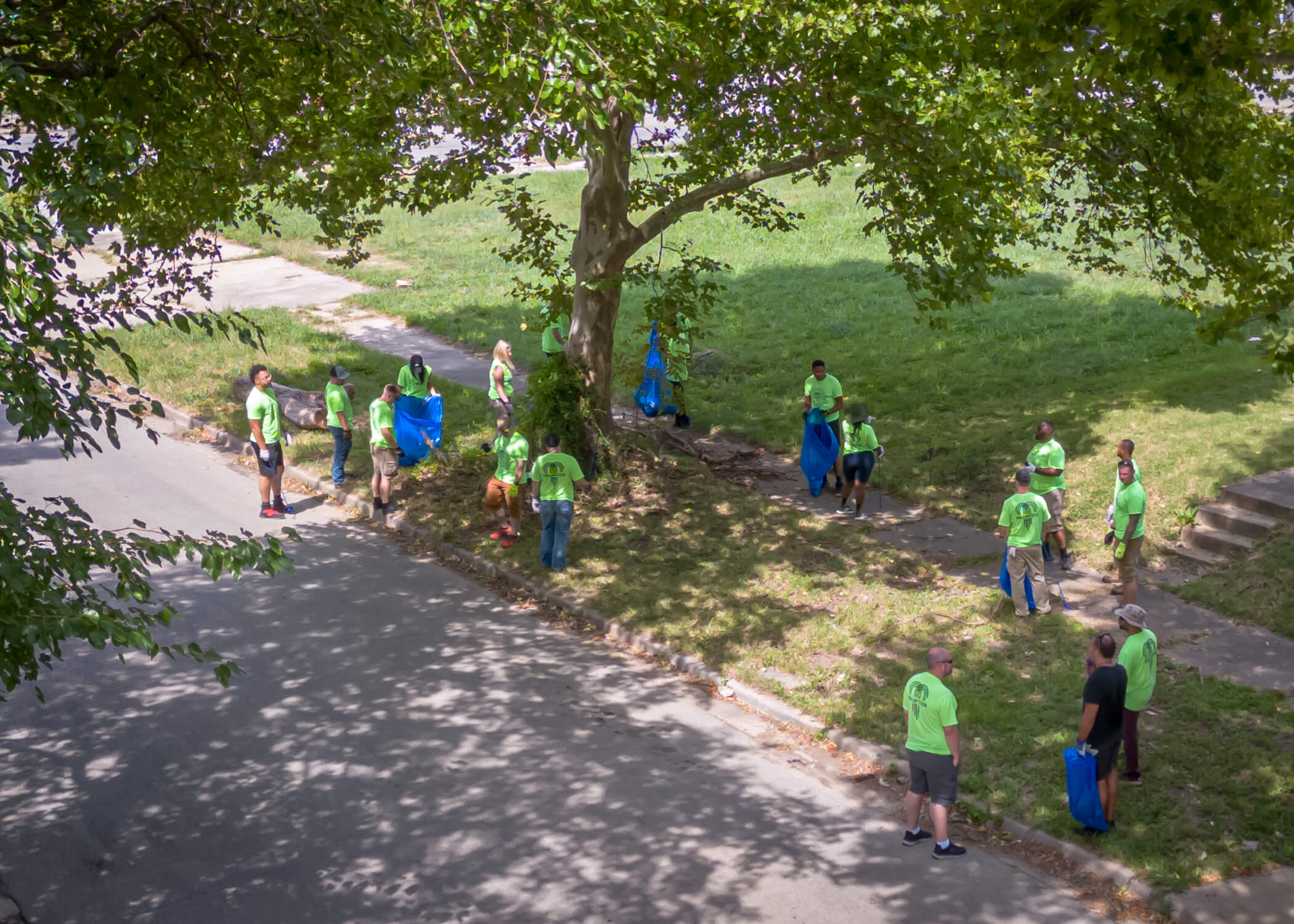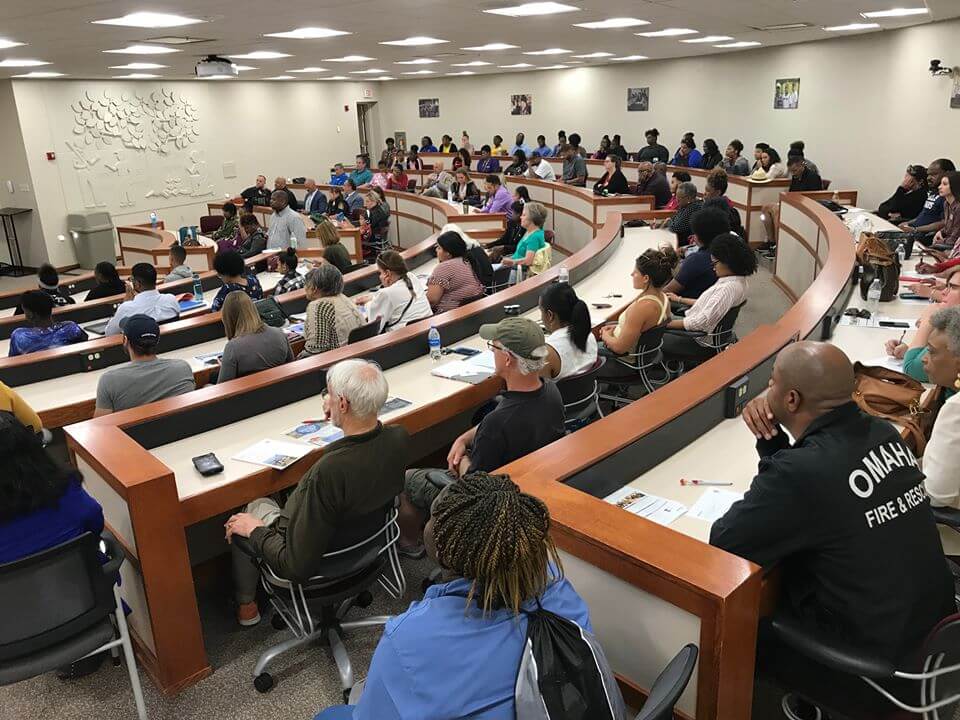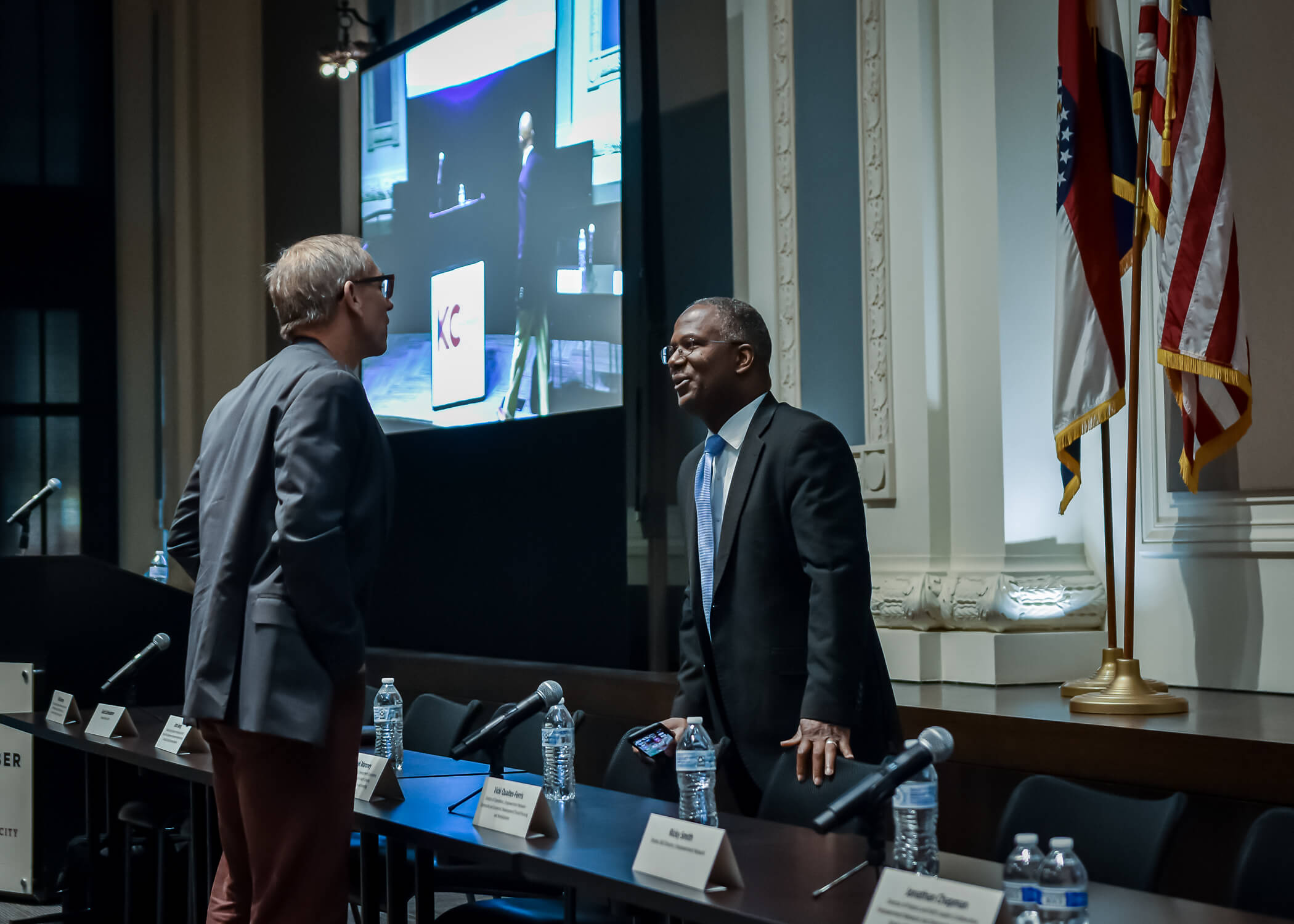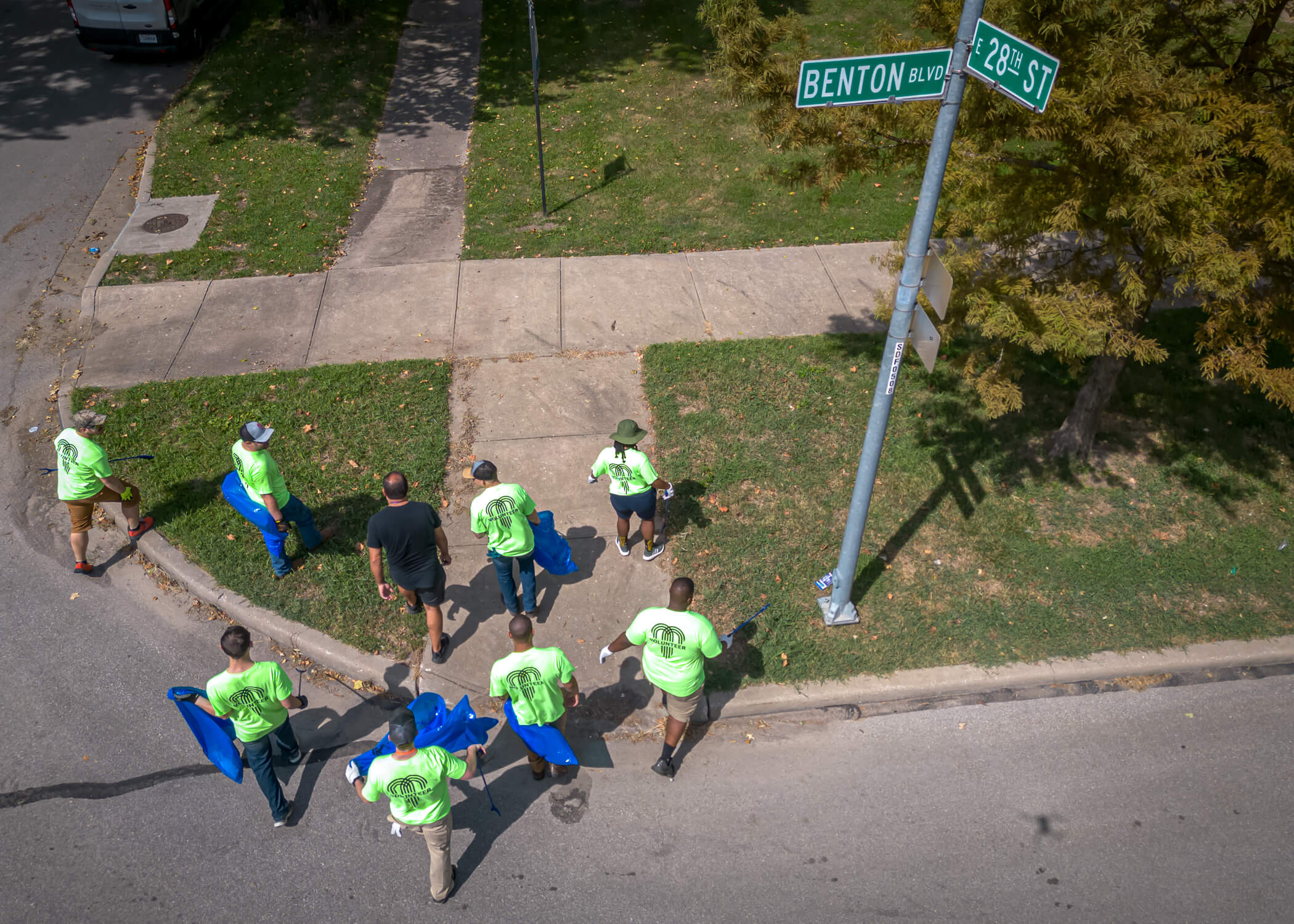The greater Kansas City community is at a critical moment in time. Over the past decade, the Kansas City area has seen escalating violent crime, especially homicides involving firearms. The past three years in particular have been the worst for violence and homicides in the region’s history, with 2023 on pace to be our most violent year on record.

Kansas City is Not Alone
It’s important to remember that Kansas City isn’t the only city plagued with violent crime. In times of hardship, there are always people and organizations that step up to take control of problems and make changes for the common good. Founded in 2019, KC Common Good is one of those organizations.
When Klassie Alcine was selected to lead the new organization, she began researching violence prevention programs nationwide to see how other cities were combating rising violent crime. After thorough research, Omaha, Nebraska’s Omaha 360 program stood out as a successful model of violence prevention that could be replicated in Kansas City.
Omaha 360 immediately stood apart because it recognizes a few simple truths about violent crime: it is not isolated, it is rarely accidental, and it is never normal.
Violent crime, in particular, is a product of large-scale community challenges, driven by root causes that are difficult for individuals to overcome on their own.
The root causes in North Omaha were poverty, high unemployment, and low educational attainment. The neighborhoods and communities that suffer from the highest rates of violent crime also lack access to resources like health care, good schools, and basic social services. These communities also hold low levels of trust in police and other community institutions.
So, what is Omaha 360? How did they combat violent crime, and what can we learn from their efforts?

The Empowerment Network and Omaha 360
Much like Kansas City’s current state of violent crime, Omaha, Nebraska experienced a similar rise in violent crime in the late 1990s and early 2000s. Omaha is the 39th largest city in the United States, with 500,000 residents in the city and nearly 1,000,000 in the metro area. It has an increasingly diverse population including African-American, Latino and Asian residents. It has one of the largest number of Sudanese and Somalian populations in the country.
With community efforts to address violent crime very disconnected and a significant lack of trust between the community and Omaha Police Department, the city saw an all-time high of non-fatal shootings between 2006 and 2008. The violence was so widespread in 2006 that Omaha’s Chief of Police at the time coined it as an “epidemic of youth violence erupting in the city.”
That year, Willie Barney founded and brought together a small group to begin the formation of The Empowerment Network, an organization dedicated to working together with residents and leaders to transform distressed neighborhoods and improve the economic condition and quality of life of African-Americans in Omaha. After having discussions with his wife Yolanda, Barney initially met with two people, Greg Johnson and Teresa Hunter to outline a process and model he had developed after years of research, data gathering and review of successful movements.
He then invited others to participate growing from the initial three participants to seven, ten and then a larger meeting where 70 African-Americans came together and agreed to work together to transform the community. Barney also met individually with dozens of leaders to invite them to get engaged.
Equipped with the research and data Barney had gathered, the group originally identified the pillar issues facing Omaha’s Black community: employment, education, entrepreneurship, housing, violence prevention, health, transportation, and access to technology. Working to address these pillars, The Empowerment Network began to connect community organizations and introduce new programs to address the identified needs.
Barney convened and facilitated the meetings on Saturday mornings to identify assets, issues and develop solutions. After initial discussions, the participants would break into groups focused on the specific areas identified. One of the core groups was the Empowerment Network’s Violence Prevention team.
Barney continued to facilitate the Saturday morning meetings and led to the development of an initial 10-point action plan for Omaha to reduce gun violence. The draft plan was introduced to the community at a forum where 300+ residents and other leaders attended. The attendees reviewed the initial plans and provided additional recommendations.
After experiencing a rash of 31 shootings in 31 days in July 2007 that occurred primarily in North Omaha, the group mobilized in the community with prayerwalks led by faith leaders, direct outreach in neighborhoods most impacted and Barney introduced a village strategy to focus on the area with the highest level of violence, 30th and Parker.
They also reached out directly to some of Omaha most active offenders. By sitting at the table with these individuals and listening to their stories and thoughts, the Empowerment Network gained valuable insight into why these young men got involved with gangs and how they wound up involved in shootings.
The group took three main points away from these conversations to apply to their community-wide work:
- The young men couldn’t get jobs. They reported that when they submitted resumes, they would never hear back. There were no avenues to make money legally; they had to look at other methods to generate income.
- There were no activities or projects for them to put their energy toward, especially when they had no real income. With no extra money, young people would find themselves sitting at home with no outlets when they weren’t attending school or part of other activities. This idleness, coupled with a drive to earn an income, led them to become involved with gangs and crime.
- School just didn’t seem right. When they went to school, they felt that what was being taught didn’t match their experiences outside of the classroom. This led them to turn away from education as a route to finding a livelihood that could pay the bills and help them build a decent life.

The 360 Model Evolves
Empowerment Network leaders from the Violence Prevention team immediately set out to develop robust solutions around employment, mentorship, and summer activities. The following summer, the first youth employment program began, offering employment opportunities to individuals from communities and areas in Omaha most impacted by violent crime who weren’t able to get jobs the previous summer. The Network members found that in a very short amount of time, their programs caused a measurable decrease in crime in an area designated by Barney as the original Village Strategy.
“At first, people told us that the young men didn’t want to work – they wouldn’t show up. That couldn’t have been further from the truth. They came and they brought other people with them. They wanted to make a change then, and they continue to make those changes today.” – Willie Barney, CEO & Founder of The Empowerment Network.
Using what was learned during the summer months, the Network members supported the launch of two gang intervention organizations and separately Barney invited seven leaders to come together on Wednesday at 2pm to develop a more comprehensive strategy. He recommended the name Omaha 360 to highlight that it would take the community coming together from all sectors to provide wraparound services to the youth and families most impacted by violence.
The violence intervention and prevention team was formalized into Omaha 360 in December 2008. A series of meetings were held to introduce the strategy to key leaders and a press conference was held early in 2009 to share the initiative with the community.
Since then, Omaha 360 strategies have expanded to include year-round youth mentorship and employment programs, job training, reentry programs, justice system reform, neighborhood revitalization and cleanup programs, and the expansion to 12 Village Initiative zones. Over 500 individuals and organizations have participated in the comprehensive strategy which includes collaboration, prevention, intervention, enforcement, reentry, support services and sustainable funding. Following the retirement of Chief Thomas Warren, former Chief Alex Hayes and current Chief Todd Schmaderer expanded the police departments engagement and alignment with the community-based Omaha 360 strategy. Each leader was actively involved and supported the collaborative approach.
Fifteen years later, gun violence was reduced by 70% in North Omaha and 60% citywide. The Black community in particular made gains in important socio-economic indicators—in North Omaha, high school graduation rates increased from 64% to 81% and the unemployment rate was reduced from 21% to just 7% percent.
Omaha’s success has inspired dozens of other cities to invest in similar violence prevention models. Since 2020, Barney, Network team members and core partners have helped to introduce The Empowerment Network and Omaha 360 models to more than 60 cities across the country. As he continues to share Omaha’s methods for preventing violence by addressing its root causes, the organization’s work in Omaha continues to grow and adapt to change.
When asked what it takes to bring down violent crime, Barney says that every person has a role to play in making their city safer. He encourages individuals and organizations to identify what they are best at doing and focus their efforts on their areas of strength within the larger Empowerment Network and 360 models.

Building KC 360
Seeing the overwhelming success of The Empowerment Network and the Omaha 360 program, KC Common good hosted a trip in May 2022, where 35 people from 20 Kansas City organizations traveled to Omaha for a three-day visit to learn about the Omaha 360 violence reduction model.
Within two weeks of returning from the trip, Kansas City leaders formed KC 360, a violence prevention and reduction coalition based on the Omaha framework and model but customized to meet Kansas City’s unique local needs. KC 360, facilitated by KC Common Good, convenes leaders and stakeholders in the Kansas City community to achieve and maintain a long-term reduction in violent crime, while also making important community and institutional changes. Meetings are held weekly and serve to take ideas and turn them into actionable, real-time solutions.
We have seen strong early adoption of the 360 model, and are already seeing its impact on the community, bringing more than 60 community-based organizations, government representatives, law enforcement, clergy members and dozens of dedicated individuals weekly to address the root causes of violence in our community. But this is only the beginning.
Here at KC Common Good, what we’ve learned from The Empowerment Network and implemented the 360 model in our community. In the years to come, we aim to see results similar to those in Omaha, reducing violent crime, increasing graduation rates and employment and building back trust throughout our community.
The 360 model is just that, a model. As we continue to invest in and improve our city, we will adapt to those changes and work directly with target neighborhoods to continue to build community relationships and influence positive change.

How can you help?
The 360 model relies on community effort. The best way to get involved in KC 360 is to show up. You can volunteer or learn more by attending one of our meetings. Our meetings are free and open to the public, and we welcome everyone from area business owners and nonprofit leaders to community organizers and everyday citizens. By joining us for meetings and learning more about the power of KC 360, you can join in the movement to reduce crime in Kansas City.
KC 360 Meetings:
When: 9 a.m. every Thursday morning
Where: Magis Activity Center at Rockhurst University, 5311 Tracy Ave, Kansas City, MO 64110
What to Expect: Weekly discussion topics, weekly updates on violent crime in our community, messages from community leaders, round table discussions aimed at finding practical solutions, and collaboration opportunities with organizations focused on making our community safer.



